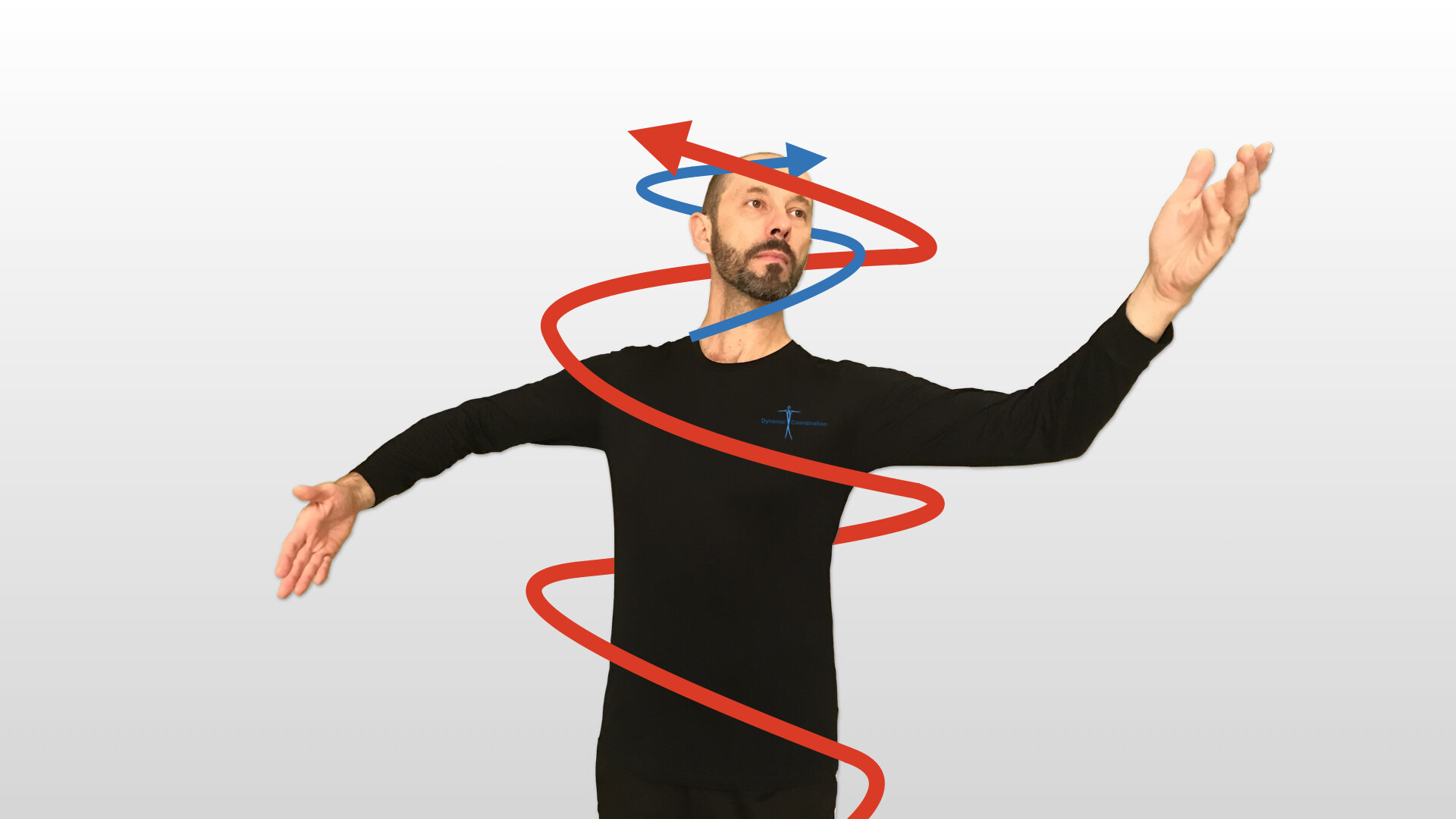Opposing Spirals for Stability and Support
So far in our explorations of spirals we dealt with one continuous spiral through the body, where we can say “head was leading and body followed” (not true in all cases but this image gives a good visualization of the continuity). Here, we will look at opposing spirals and their function.
We will start by demonstrating a typical standard dance position.
Red spiral demonstrates rightward rotation and blue spirals demonstrate leftward rotation.
When connecting with a partner, both lead and follow have gentle spirals to the right through their torsos (also through the legs but we won’t discuss it here). The head of each partner, however, does not follow that rightward spiral, but opposes it by turning to the left. This opposition of spirals creates a wringing feeling, as in wringing the water out of a washcloth. This oppositional arrangement gives the body a natural sense of stability and support, without the need for stiffening and bracing.
You can also clearly see the same kind of opposition as we move to promenade position (where both partners face in the same direction).
Red spirals demonstrate rightward rotation and blue spirals demonstrate leftward rotation.
Here, the directions of spirals stay the same for the lead, but change for the follow (body spirals to the left, head to the right).
This natural opposing of spirals gives ballroom dancing its characteristic continuity and smoothness in transitions from one rotation to the next. In competitive style, these opposing spirals are taken further, depending on the mobility of the dancers. This opposition sometimes creates an illusion of an enormous shape, which is quite often mistaken by laypeople as leaning back. A closer look at highly skilled couples will reveal that it is in fact the opposition (“the antagonistic actions”) that creates the volume of the dancers’ frame. As a side note here, I will mention that the spirals and their opposition is also used in Latin American division of ballroom dancing. I will leave this discussion for a different article.
In Alexander Technique we often use chair procedures which take the student through the same spirals as ballroom dancers do in their dancing. Especially if your AT training included Dart Procedures, this sequence is probably familiar to you. Notice the same spirals I described earlier in the standard dance position.
In conclusion, the spiral arrangement of our musculature gives us the opportunity for a continuous, smooth movement. The opposing spirals give us the stability and support needed to perform many tasks, from walking to complicated dance choreography.
In my next installment of the spiral exploration in ballroom dancing, we will look at spirals in the arms, and how we can use them to achieve a dynamic dance hold with a partner, without stiffening and holding the frame.








